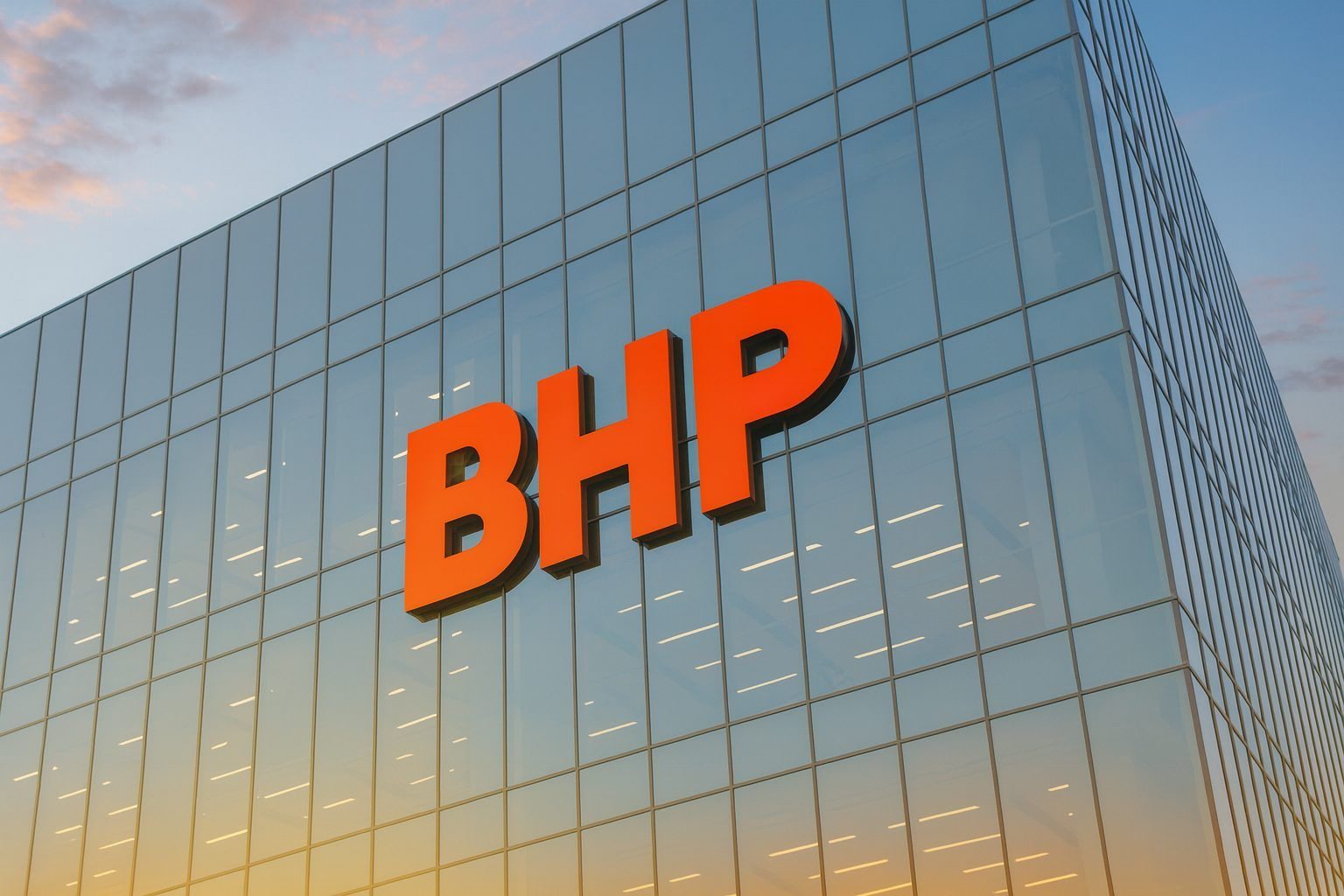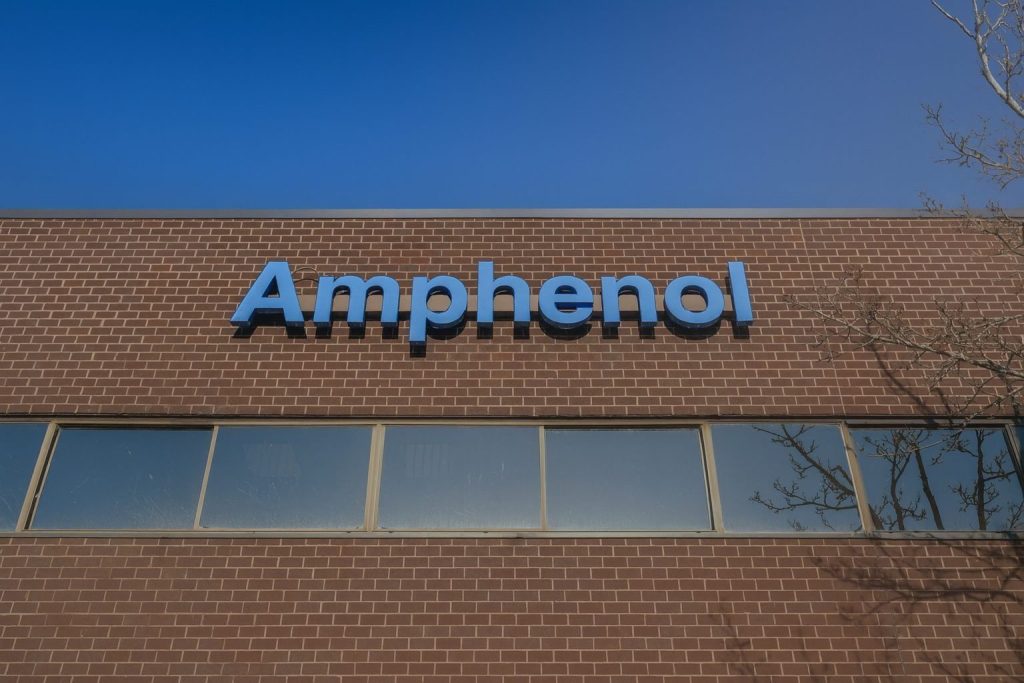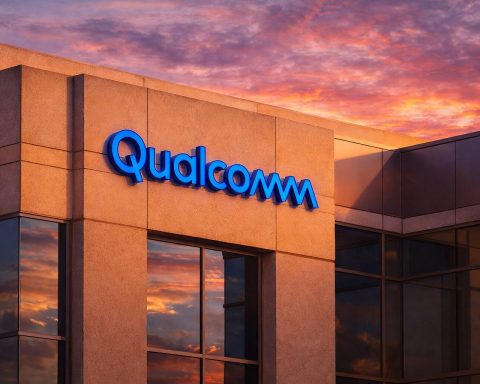Wednesday, November 26, 2025
BHP Group Limited’s U.S.-listed shares head into today’s session with the stock sitting near the upper half of its 52‑week range, but investors are weighing a crowded mix of catalysts: a scrapped mega‑merger with Anglo American, an escalating iron ore stand‑off with China, fresh legal liabilities in Brazil, and a long pipeline of copper and potash growth projects.
BHP stock price snapshot ahead of today’s trade
As of Tuesday’s close in New York (November 25), BHP Group Limited ADR (NYSE:BHP) finished at $53.68, up 1.42% on the day. After‑hours trading nudged the stock slightly higher to about $53.94. [1]
Key trading and valuation metrics:
- Market cap: ~$134.4 billion [2]
- Change on Tuesday: +$0.75 vs. the previous close of $52.93 [3]
- 52‑week range: $39.73 – $58.92, putting BHP roughly 9% below its 12‑month high and about 35% above its low. [4]
- Trailing P/E: ~30.3; forward P/E: ~12.9, reflecting expectations for earnings recovery as new projects ramp. [5]
- Dividend (trailing 12 months): $2.17 per ADR, a yield of about 4.0% at current prices, with the last ex‑dividend date on September 5, 2025. [6]
On Wall Street, BHP currently carries a consensus “Hold” rating, with an average 12‑month target price around $48.50 – implying modest downside from Tuesday’s close, even after the latest rally. [7]
Anglo American takeover saga: bid over, focus back on “organic growth”
The headline corporate story for BHP this week is its decision to walk away from a renewed takeover approach for Anglo American.
- On Monday, November 24, BHP told the market it is “no longer considering a combination” with Anglo American after preliminary talks, a move announced via an ASX filing and confirmed in a formal statement on its website. [8]
- Reuters reports that the latest approach was largely a shares‑based proposal designed to disrupt Anglo’s planned $60 billion merger with Teck Resources, which goes to a shareholder vote on December 9. [9]
- Under U.K. takeover rules, BHP now faces a six‑month standstill before it can make another bid for Anglo. [10]
Investor reaction has been broadly relieved rather than euphoric. Reuters notes that BHP’s shares rose about 0.4% in the latest Australian session after the company stepped back, while Anglo’s shares opened around 2% higher in London as deal uncertainty eased. [11]
In follow‑up comments, investors told Reuters that BHP should now “get over Anglo” and concentrate on delivering existing growth projects, such as the Jansen potash mine in Canada and copper expansions in South America and South Australia. [12]
From a stock perspective, this matters for three reasons:
- Deal risk is off the table (for now): Large, share‑funded acquisitions create uncertainty around integration, debt levels and future dividends. Stepping back removes a major overhang.
- Capital discipline narrative is intact: After lifting its net‑debt target to $10–20 billion alongside weaker FY25 earnings, BHP has been under scrutiny on how aggressively it would pursue M&A. Walking away supports the idea that management is still prioritising returns and balance‑sheet resilience. [13]
- Copper growth question lingers: The Anglo/Teck combination will create a copper giant that competes directly with BHP’s long‑term ambition to grow copper output to ~2.5 million tonnes per year. Without Anglo, BHP must prove it can deliver that growth organically. [14]
China iron ore dispute: targeted bans, global impact
At the same time, BHP is locked in a high‑stakes pricing dispute with China’s state iron ore buyer, China Mineral Resources Group (CMRG).
- Since September, CMRG has told Chinese mills and traders to stop buying BHP’s Jimblebar Blend Fines, a specific iron ore product. [15]
- In November, that embargo was widened to include Jinbao (also called Jinbao or Jingbao) fines, another lower‑grade BHP product, in effect creating a second targeted ban as 2026 contract talks drag on. [16]
Sources quoted by Reuters and specialist mining outlets say:
- The bans currently focus on lower‑grade fines rather than BHP’s flagship Pilbara Blend, limiting immediate volume impacts but reshaping stockpiles at Chinese ports. Jimblebar inventories have surged while rival Rio Tinto’s Pilbara Blend inventories have dropped sharply as buyers switch suppliers. [17]
- Iron ore futures in China have held above 790 yuan per tonne (about $110) despite weaker steel output, with analysts calling it a “man‑made bull market” driven by supply constraints, not booming demand. [18]
- Port Hedland export volumes – the main gateway for BHP’s Australian iron ore – remain robust, with shipments up around 8.5% year‑on‑year in October, suggesting BHP has been able to redirect some tonnage even as China pressures contract terms. [19]
For BHP’s stock, the dispute creates a tug‑of‑war:
- On the negative side, uncertainty over 2026 contracts, pricing formulas, currency (RMB vs USD) and quality adjustments could crimp margins or force BHP to accept less favourable terms. [20]
- On the positive side, constrained supply of specific products has helped support benchmark prices, partially offsetting weaker Chinese steel demand – a dynamic that underpinned BHP’s profitability through much of FY25. [21]
Short‑term traders watching BHP today will be alert for any headlines on iron ore negotiations or further bans, as these could move both the commodity and the stock quickly.
Fundamentals check: record volumes, weaker prices, and a thinner dividend
BHP’s latest full‑year results (for the year ended June 30, 2025) underline the company’s core strengths – and its exposure to iron ore prices.
According to the company’s FY25 release and operational review:
- Revenue: about $51.3 billion, down roughly 8% year‑on‑year. [22]
- Underlying attributable profit: about $10.2 billion, with underlying profit reported by Reuters at $10.16 billion, a 26% drop versus FY24 and the smallest in five years. [23]
- Dividend: total FY25 payout of $1.10 per share, BHP’s lowest annual dividend since 2017, though still slightly ahead of analyst expectations. [24]
Operationally, BHP posted some impressive records:
- Copper production exceeded 2 million tonnes for the first time, up roughly 28% over three years, led by a 16% output increase at Escondida in Chile and strong contributions from its South Australian copper assets. [25]
- Iron ore output from Western Australia Iron Ore (WAIO) reached about 290 million tonnes on a 100% basis, also a record, even after weather disruptions. [26]
The problem was price, not volume. BHP’s average realised iron ore price fell around 19% in FY25, reflecting higher global supply and softer Chinese steel production, partially offset by stronger copper prices. [27]
The company responded by:
- Lifting its net‑debt target to $10–20 billion, giving more balance‑sheet flexibility without committing to immediate large‑scale deals. [28]
- Signalling $11 billion per year of capex and exploration in FY26 and FY27, stepping down to about $10 billion annually in FY28–FY30. [29]
Despite the earnings drop, BHP emphasised that demand for steelmaking materials, copper and potash remains structurally strong, particularly in China and India – a narrative strongly tied to the energy transition and infrastructure build‑out. [30]
Growth pipeline: Jansen potash delay, copper build‑out, and green steel
Jansen potash: more expensive, arriving later
A key medium‑term driver for BHP is Jansen, its flagship potash project in Saskatchewan, Canada.
- In July, BHP flagged a cost overrun of up to $1.7 billion on Jansen Stage 1, raising estimated capex to $7.0–7.4 billion from an original $5.7 billion. [31]
- First production has been pushed back to mid‑2027, versus an earlier accelerated target of late 2026, effectively reverting to the original timetable. [32]
- BHP is also considering delaying Stage 2 first production out to FY31, citing a potential wave of additional potash supply and the need to sequence capital carefully. [33]
The delays and higher costs dent the near‑term return story but do not fundamentally change BHP’s view that potash will be a long‑duration growth market linked to food security and sustainable agriculture.
Copper growth: Olympic Dam and beyond
Copper remains the strategic metal for BHP, and recent announcements underscore that focus:
- On October 1, BHP announced it will invest more than A$840 million (~$555 million) into its Olympic Dam operations in South Australia to expand underground access, backfill systems and smelter efficiency. [34]
- The goal is to help double South Australian copper output to roughly 650,000 tonnes by the mid‑2030s, with a final decision on a much larger smelter and refinery expansion now expected in 2028. [35]
BHP’s broader copper portfolio – spanning Escondida and other Chilean assets, Copper South Australia operations (including Olympic Dam and Carrapateena), and projects in Argentina – is central to its plan to grow total copper production from about 1.7 million tonnes today to around 2.5 million tonnes per year over the next decade. [36]
Green steel push with POSCO
On the decarbonisation front, BHP and South Korean steelmaker POSCO recently signed an agreement to advance hydrogen‑based, near zero‑emissions iron at a demonstration plant in Pohang, South Korea.
- The plant is expected to start up around 2028 and produce about 300,000 tonnes of near‑zero‑emissions iron per year, using hydrogen and an electric smelting furnace rather than coal‑based blast furnaces. [37]
While years away from commercial scale, the project is important to BHP’s narrative that it can remain a leading iron ore supplier in a low‑carbon steel world, which is highly relevant to long‑term investors and ESG‑focused funds.
Legal overhang: UK court finds BHP liable for Brazil dam disaster
Another key risk that equity markets are digesting is BHP’s legal exposure from the 2015 Fundão dam collapse in Mariana, Brazil.
- On November 14, London’s High Court ruled that BHP can be held liable under Brazilian law for the disaster, which killed 19 people and caused extensive environmental damage along the Doce River. [38]
- The U.K. group action represents hundreds of thousands of Brazilian claimants, with potential damages previously estimated by claimant lawyers at up to £36 billion (~$47–48 billion), though analysts expect any eventual settlement to be far lower and spread over many years. [39]
- BHP has said it intends to appeal and emphasises that separate Brazilian remediation and compensation frameworks are already in place; the U.K. trials on damages may not conclude until 2028–2029. [40]
For shareholders, the ruling adds a long‑dated but material legal overhang. It is unlikely to move the stock on any given day unless there are major new developments, but it feeds into how investors think about BHP’s risk premium, ESG profile and future cash‑flow allocation.
What analysts are saying about BHP stock now
Recent analyst commentary paints a picture of cautious optimism:
- MarketBeat and other aggregators show a consensus “Hold” rating on the NYSE‑listed ADR, with an average target around $48.50 – about 10% below the current share price. [41]
- For the Australian‑listed shares, firms such as Morgan Stanley and JPMorgan have maintained “Overweight” or “Buy”‑leaning views with AUD‑denominated targets that imply mid‑teens upside, pointing to BHP’s low‑cost iron ore position, copper leverage and dividend support, albeit with some recent target trims on earnings outlook. [42]
- Other brokers are more cautious: one compilation of 22 analyst views shows a mix of Buy/Hold with a small minority of Sell, and an average medium‑term upside of around 10–12% for the Australian line, highlighting ongoing debate about macro risks and capital spending. [43]
Key points analysts keep coming back to:
- Pros: diversified commodity exposure, industry‑leading iron ore margins, rising copper share of earnings, strong free‑cash‑flow potential in a more supportive commodity tape, and a still‑attractive dividend yield. [44]
- Cons: sensitivity to Chinese demand and policy, capex creep (especially at Jansen), the China iron ore stand‑off, and the long‑running Brazilian dam litigation. [45]
Key things for BHP investors to watch today
Going into the Wednesday, November 26 session, here are the main watchpoints for BHP stock:
- Iron ore and copper price moves
With the CMRG dispute still unresolved, any shift in Chinese futures or spot iron ore prices could quickly filter into BHP’s share price. Iron ore has remained surprisingly firm given softer steel output; a sharp correction would be a clear negative. [46] - Fresh headlines on China or Anglo/Teck
- Legal commentary and ESG reaction
More analysis of the UK dam ruling may emerge as law firms and investors digest the judgment’s implications for multinational liability, which could influence ESG flows into or out of the stock. [49] - Positioning into year‑end
With BHP trading closer to its 52‑week high than its low and U.S. markets focused on the Fed’s rate‑cut path into December, some investors may use any volatility in commodities as an opportunity to rebalance positions in large‑cap miners like BHP. [50]
Bottom line
BHP enters today’s trade as a big, liquid, dividend‑paying miner sitting at the crossroads of several powerful themes:
- The end of the Anglo American chase reinforces a message of capital discipline but leaves the group relying more heavily on its own copper and potash projects. [51]
- The China iron ore stand‑off shows how exposed even the world’s lowest‑cost producer is to political and pricing power in its largest market. [52]
- The Brazil dam ruling is a reminder that ESG and legal risks can rumble on for a decade and still reshape the forward risk profile. [53]
- Meanwhile, record copper and iron ore output, Olympic Dam expansion plans, the Jansen potash project, and green‑steel pilots with POSCO keep alive the case that BHP is structurally tied to the energy transition and infrastructure investment cycles. [54]
Whether BHP looks attractive at current levels ultimately depends on your view of iron ore and copper prices, China’s policy path, and your tolerance for long‑tail legal risk. For now, the stock trades like what it is: a global mining bellwether, still heavily influenced by macro headlines but anchored by a deep portfolio of tier‑one assets.
Note: This article is for informational purposes only and does not constitute financial or investment advice. Always do your own research or consult a licensed adviser before making investment decisions.
References
1. stockanalysis.com, 2. stockanalysis.com, 3. stockanalysis.com, 4. stockanalysis.com, 5. stockanalysis.com, 6. stockanalysis.com, 7. www.marketbeat.com, 8. www.bhp.com, 9. www.reuters.com, 10. www.reuters.com, 11. www.reuters.com, 12. www.reuters.com, 13. www.reuters.com, 14. www.bhp.com, 15. www.reuters.com, 16. www.reuters.com, 17. www.reuters.com, 18. www.reuters.com, 19. www.theaustralian.com.au, 20. www.theaustralian.com.au, 21. www.reuters.com, 22. stockanalysis.com, 23. www.bhp.com, 24. www.reuters.com, 25. www.bhp.com, 26. www.bhp.com, 27. www.reuters.com, 28. www.reuters.com, 29. www.bhp.com, 30. www.bhp.com, 31. www.reuters.com, 32. www.reuters.com, 33. www.reuters.com, 34. www.reuters.com, 35. www.mining.com, 36. www.bhp.com, 37. www.reuters.com, 38. www.reuters.com, 39. www.reuters.com, 40. www.bhp.com, 41. www.marketbeat.com, 42. www.fool.com.au, 43. stocksguide.com, 44. www.bhp.com, 45. www.reuters.com, 46. www.reuters.com, 47. www.reuters.com, 48. www.reuters.com, 49. www.pinsentmasons.com, 50. stockanalysis.com, 51. www.reuters.com, 52. www.reuters.com, 53. www.reuters.com, 54. www.bhp.com










